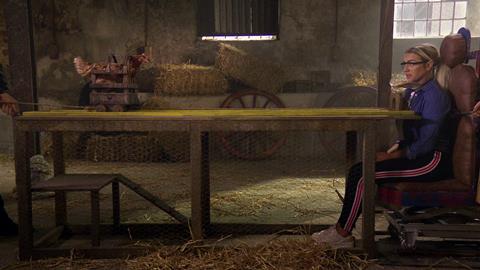 Sponsored content
Sponsored content
Managing the many safety risks involved in complex productions requires a systematic approach and needs early planning, says Jamie Fewster
The government’s Health and Safety Executive states that risk assessment is a fundamental part of managing health and safety but how does a production ensure thorough scrutiny of the multiple activities involved, that suitable and practical controls are in place, and that appropriate information has been provided to all who need to know?
Safety planning should start as early in the process as possible, such as when scripts are being reviewed and shoots and locations being scoped out. It’s at this stage that key production hazards based on locations and the action required, like set construction, stunts can be identified and prepared for.
The technical recce is the opportunity to see the filming locations and to discuss the intended filming and work activities to help identify the safety preparations required, including pre- and post-filming.
For example, it’s highly likely that a production will need to construct sets or rigging either within studio or on location. All relevant information that may impact the design of the set or structure needs to be obtained in advance. This could include structural surveys, asbestos surveys, floor or weight loadings and ceiling heights of studios.
Managing higher-risk hazards
Many production activities involve working at height. More people die from falls from height than any other accident at work and so all work like this – working in studio lighting grids to using ladders – can carry significant risk. This can be reduced by ensuring all equipment is fit for purpose and maintained in line with legislation and operated by a licenced person where required.
Where the script calls for action sequences, stunts or special effects, detailed plans are required, with competent specialists brought in to oversee the activities. The production needs to ensure it provides sufficient time and resources to allow these higher risk elements to be done safely.
The nature of production means that there are any number of specialised activities that productions may also have to manage such as partaking in extreme sports or filming from boats. The key is to source the right expert to advise and guide you.
There may also be risks presented by extreme or remote environments such as arctic, desert or tropical regions, where proper training and equipment for the crew, sound medical support and evacuation planning are required.
THE BARCLAYS VIEW - RELATIONSHIP DIRECTOR GAVIN SMITH
“You can never underestimate the importance of health and safety and wellbeing with individuals on any production set. Barclays are still able to support on more risky shoots provided the correct insurance is in place.
”This is why relationships with businesses like 1st Option safety are so important to us and production companies we work with. This type of advice can be invaluable and can give productions that extra bit of comfort.”
Contact Gavin here.
Managing lower-risk hazards
Whilst it’s easy to focus on the higher risk elements, the management of lower risk hazards is just as vital if accidents and costly production interruptions are to be avoided. These include ensuring good housekeeping with clear routes, good welfare arrangements and well controlled working hours and travel times for crew.
Currently the management of mental health is in full focus, not only for contributors, but everyone involved in production. Ensuring that proactive support and proper information is provided and where necessary access to professional help for those affected is just as important as access to regular medical support.

There are many other activities that need solid safety management. The key is to identify the risks early, get the right people on board and ensure everyone involved has the right training and skills to keep themselves and everyone else safe.
Jamie Fewster is the head of media safety services at 1st Option Safety Group, which provides expert safety support, training and equipment on over 500 productions each year








